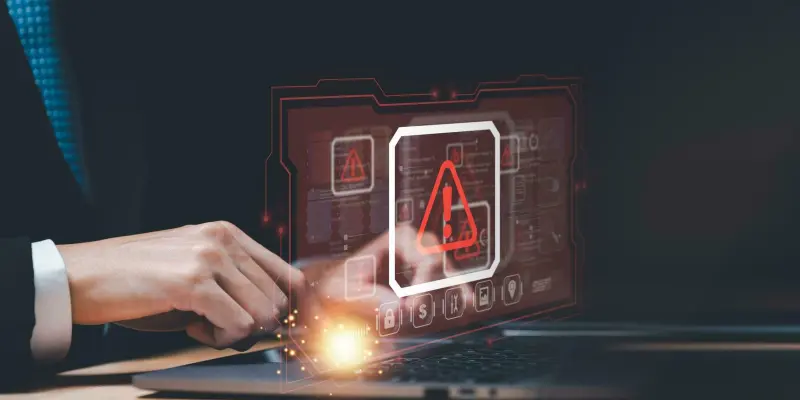The Internet of Things (IoT) revolution has introduced new conveniences and functionalities, but its rapid integration has also opened the door to significant cybersecurity threats. Recent developments have spotlighted the exploitation of vulnerabilities within IoT devices by the notorious Mirai botnet, highlighting the critical issue of outdated firmware and inadequately secured end-of-life devices. Two major vulnerabilities have been identified in GeoVision IoT devices—namely, CVE-2024-6047 and CVE-2024-11120—which allow attackers to execute arbitrary system commands. The method involves attacking the /DateSetting.cgi endpoint by injecting commands into the szSrvIpAddr parameter to download and deploy the Mirai malware variant LZRD.
Outdated Firmware and Device Vulnerabilities
GeoVision Vulnerability Exploitation
GeoVision’s older end-of-life IoT devices have become prime targets for cyber attackers due to their outdated firmware and lack of patches. The primary method involves exploiting two significant vulnerabilities, CVE-2024-6047 and CVE-2024-11120, in these devices. The attack predominantly targets the /DateSetting.cgi endpoint, where illicit commands are injected into the szSrvIpAddr parameter. This allows the Mirai botnet to download and activate its latest malware variant, adding these devices to its extensive network for future attacks. The growing threat emphasizes the risks associated with unsupported devices, where users fail to upgrade to newer, more secure models. These older devices, often left in the field without proper updates, become easy targets for cybercriminals, serving as conduits for the Mirai botnet’s activities. The connection between poor firmware security and exploitation is evident, as manufacturers typically cease updates for obsolete models, leaving them vulnerable to evolving threats. Recommendations focus on upgrading to modern devices, as they offer improved security features and receive regular patches to address known vulnerabilities. The persistence of vulnerabilities in IoT devices aligns with a broader cybersecurity concern about legacy systems’ susceptibility to cyberattacks.
Path Traversal Flaw in Samsung MagicINFO
Beyond GeoVision, the exploitation of Samsung MagicINFO 9 Server’s path traversal flaw represents another layer of concern. Despite the company’s efforts, including August 2024 patches, the system remains exposed to attacks that permit arbitrary file writing, advancing remote code execution. The proof-of-concept released by SSD Disclosure has accelerated these attacks, underscoring the urgency for comprehensive security measures. Investigations indicate that even Samsung MagicINFO’s most recent server versions are vulnerable, casting doubt on the patch effectiveness or pointing to separate vulnerabilities altogether. Cybersecurity firm Huntress has suggested that these vulnerabilities could stem from incomplete patching efforts, reminding stakeholders that surface solutions can leave systems exposed. Samsung’s case highlights the complexities involved in ensuring endpoint security, particularly as IoT devices become more integral to business operations. The botnet activities concerning the GeoVision vulnerabilities further illustrate that even updated models may require ongoing scrutiny and intervention. Vigilance, in this context, becomes paramount as attackers continue to craft sophisticated methods for bypassing traditional security measures.
Broader Implications and Defensive Strategies
Importance of Timely Updates
Timely updates and patches are vital in safeguarding IoT devices against burgeoning cyber threats. The critical nature of updating and patching cannot be overstated, as attackers relentlessly pursue vulnerabilities in legacy systems. The U.S. Cybersecurity and Infrastructure Security Agency’s recent inclusion of GeoVision IoT flaws in its Known Exploited Vulnerabilities catalog underscores the urgency federal agencies face to impose corrective measures by late May, adhering to established cybersecurity protocols. This call to action accentuates the ongoing need for vigilance and proactive measures, as cyber threats adapt to exploit the weakest links in the technological chain.
As manufacturers play catch-up, the obligation falls on them to ensure older systems are either patched effectively or phased out promptly. The essential role of timely updates remains a cornerstone of cybersecurity strategy and a proactive defense against unpredictable threats. Public awareness regarding the significance of applying patches can drive demand for more secure devices, pushing manufacturers to deliver consistent upgrades. This comprehensive approach requires a coordinated effort among users, manufacturers, and cybersecurity specialists to safeguard infrastructure from potential botnet attacks.
The Overlap with Past Cyber Campaigns
Recent analyses have revealed that attacks exploiting GeoVision vulnerabilities are reminiscent of past campaigns known as InfectedSlurs, indicating overlapping narratives in cybercrime trends. This pattern suggests that strategies and methodologies remain consistent, with attackers exploiting known weaknesses until they achieve their objectives. Learning from previous campaigns, security protocols must adapt by reviewing historical attack patterns and anticipating similar efforts to deter future breaches. The proactive examination of these trends can fortify defenses, aiding agencies and manufacturers in implementing robust security measures.
Integrating lessons learned from past incursions can aid stakeholders in crafting more resilient architectures, emphasizing anomaly detection and immediate response measures. The exploitation of GeoVision and Samsung vulnerabilities highlights the broader issue of persistent weaknesses in existing cybersecurity frameworks. Employing strategic foresight and emphasizing collaboration among agencies, manufacturers, and cybersecurity experts can encourage deeper examination of potential threats, enhance preparedness, and mitigate risks associated with IoT integration.
Warding off Evolving Cyber Threats
The Internet of Things (IoT) revolution has introduced a range of conveniences and advanced functionalities into everyday life. However, the rapid and widespread integration of IoT devices has also unveiled numerous cybersecurity threats. A recent highlight in this realm is the notorious Mirai botnet, which exploits vulnerabilities in IoT devices, underscoring the issue of outdated firmware and inadequately secured devices that are past their end-of-life. Two major vulnerabilities have been identified in GeoVision IoT devices: CVE-2024-6047 and CVE-2024-11120. These vulnerabilities give attackers the opportunity to execute arbitrary system commands. The method of exploitation involves targeting the /DateSetting.cgi endpoint by injecting commands into the szSrvIpAddr parameter, enabling the download and deployment of the LZRD variant of the Mirai malware. This highlights the urgent need for robust security measures and timely updates to protect these devices from malicious exploits.

